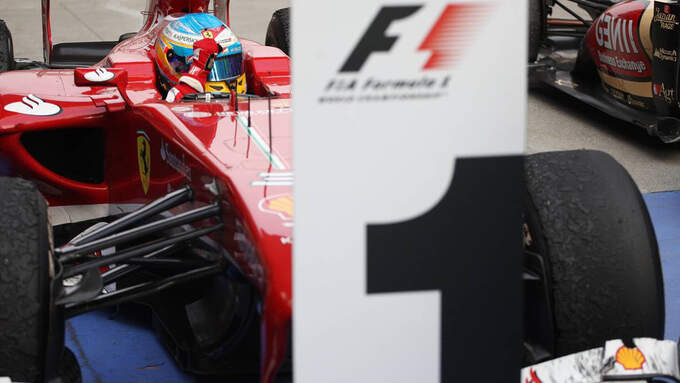And this one, also from winter testing:shelly wrote:About tyre marbels buildup: Interesting to compare with this shot

And this one, also from winter testing:shelly wrote:About tyre marbels buildup: Interesting to compare with this shot


believe it or not the hardest part is not modeling it... it is waiting a couple of days for the simulation to finish...henra wrote:I doubt it. If you would want to increase the footplate vortex you would probably rather remove the winglets on the lower elements completely and would leave them on on the upper ones. Also I think it would be to high and could even be detrimental to the footplate vortex.shelly wrote:In my opinion by removing the endplates they have the vortex starting lower (some 50mm lower?) and thus they have more downwash effect on the gap between rear wheel and footplate. So in my opinon they are looking at some extra downforce by making coanda exhausts work better
I could imgaine it is rather because of the proximity of the Rear Wing Endplates. The small 'channel' between the Brake Duct Winglets and the Rear Wing Endplate could cause some problems in the interaction with the Rear Wing Endplate and its design that aims at supporting the extraction from the diffuser due to the pressure gradient (higher pressure) towards the Rear Wing endplate.
Fast vortices behind the Brake Duct wing elements could be intended to reduce static pressure on the outsíde of the Rear Wing Endplate and could thus be helpful in the expansion work behind the Rear Wing.
Just speculation though.
Good Luck with any CFD attempts. I doubt this can be easily modeled because it is probably highly turbulent.

You work for a team ?[/quote]Nomore wrote:that could be it as well! I think I have a long week of modelling and CFD testing ahead...I know this might not be so interesting for most people but I find it extremely interesting..!
Rubber should be marble tho, perhaps collected at the last lap run.f300v10 wrote:This photo really shows the effect of the coanda exhaust. The exhaust flow appears to form a 'virtual wall' where it touches the floor, to the extent that tire 'clag' has built up into a u-shape where the flow meets the floor. The freestream air is diverted inward into the sidepod undercut area and into the gap between the floor and tire.
http://s22.postimg.org/vfwhrc6hd/Alonso ... uildup.png




It could actually just be a lump of rubber stuck to the front. Do you have it from any other angle?RicerDude wrote:Did anyone see the big chunk of carbon fibre taken out of Fernando Alonso's front wing top element after the race? Could this have been caused by a piece of rubber?
http://img3.auto-motor-und-sport.de/Fer ... 675941.jpg


In fact the entire element there looks a bit worse-for-wear! Is it safe to assume that the only thing realistically that could have enough velocity to have done the damage is a sizeable chunk of his own front tyre? He was out front/in clean air for the majority of the race and free-standing marbles surely couldn't have had the energy to splinter it like that (although admittedly the black streaks below obviously indicate the presence of them in that area)? I'm all for tyre deg making the racing closer and more exciting but when they start destroying bit of the cars (Hamilton in MAL, Alonso this week) of their own accord I think it's time for Pirelli to take a look at things!Crucial_Xtreme wrote:The FW was definitely broke, I'm just not sure exactly when it broke during the race but it was definitely broke on the last lap at least. In the pic below you can tell it's not a lump of rubber and that it's a break.
That's not a hole, its pealed off sticker. There was one hi-res picture and around the wishbones are stickers and this one is pealed off and the white is the back of it.Crucial_Xtreme wrote:... In the picture below you can see that above the front upper wishbone there is a hole just before where the nose connects to the chassis. ...http://www.f1-direct.net/2013/img/chine/105.jpg